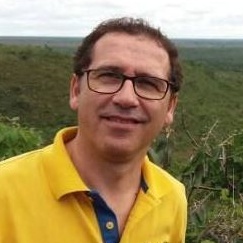Water Resource Management and Sustainable Environment Development
A special issue of Sustainability (ISSN 2071-1050). This special issue belongs to the section "Resources and Sustainable Utilization".
Deadline for manuscript submissions: closed (15 July 2023) | Viewed by 6459
Special Issue Editors
Interests: potamology; urban hydrology; tides
Interests: geography
Special Issue Information
Dear Colleagues,
Water resources are becoming increasingly valuable. The main factor leading to their inflated value is increased demand for various consumables, human-driven climate change and water pollution. In order to ensure sustainable water management and environment development, new scientific studies are required, especially those that decrypt specific mechanisms at local scale.
Our objective is to bring together articles that integrate particular processes into the global knowledge of water and environment, or that improve the actual methods or tools used for assessing properties of various water bodies or aquatic landscapes and their management or sustainable development. Waters in built areas are becoming increasingly distinct parts of the water cycle, under rules that serve human society, and may also be interesting subjects of study.
This Special Issue accepts the submission of papers analyzing topics including but not limited to the following:
- Water quality;
- Water monitoring methods/systems;
- Water management strategies;
- Water resource simulation/modeling;
- Water supply and wastewater;
- Urban stormwater;
- Water pollution;
- Urban heat island impact on water;
- Sustainable water exploitation;
- Flood impact on environment;
- Environmental vulnerability and risks.
Dr. Andrei Emil Briciu
Dr. Francisco da Silva Costa
Dr. Francisco Zepeda Mondragón
Guest Editors
Manuscript Submission Information
Manuscripts should be submitted online at www.mdpi.com by registering and logging in to this website. Once you are registered, click here to go to the submission form. Manuscripts can be submitted until the deadline. All submissions that pass pre-check are peer-reviewed. Accepted papers will be published continuously in the journal (as soon as accepted) and will be listed together on the special issue website. Research articles, review articles as well as short communications are invited. For planned papers, a title and short abstract (about 100 words) can be sent to the Editorial Office for announcement on this website.
Submitted manuscripts should not have been published previously, nor be under consideration for publication elsewhere (except conference proceedings papers). All manuscripts are thoroughly refereed through a single-blind peer-review process. A guide for authors and other relevant information for submission of manuscripts is available on the Instructions for Authors page. Sustainability is an international peer-reviewed open access semimonthly journal published by MDPI.
Please visit the Instructions for Authors page before submitting a manuscript. The Article Processing Charge (APC) for publication in this open access journal is 2400 CHF (Swiss Francs). Submitted papers should be well formatted and use good English. Authors may use MDPI's English editing service prior to publication or during author revisions.
Keywords
- anthropogenic influence
- urban water
- water quantity and quality
- wastewater
- fluvial corridor
- stormwater
- land use
- wetland
- water use
- water supply
- forecast







